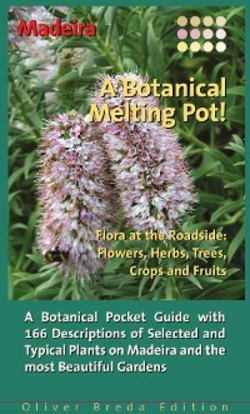Читать книгу Madeira - Susanne Lipps - Страница 9
ОглавлениеHints for the Usage of this Book
The botanical guide “Madeira- A Botanical Melting Pot!” contains plant descriptions that are organized in six typical groups. The chosen order corresponds to the order in which the visitor will probably encounter the respective flora: exotic plants introduced from tropical and subtropical countries in gardens and parks, wild growing vegetation in coastal areas, flora of cultivated land and along irrigation channels (levadas), vegetation of the laurisilva / laurel forest, flora in the mountains and on rock faces, typical useful plants.
There may be plants that cannot be clearly assigned to one of the chapters. They will be described with the vegetation form that is their most typical habitat. In order to not oversize the book you will not find descriptions neither of plants that were introduced to Madeira from Europe (maples, oaks, firs) nor of ornamental plants that are commonly known (geranium, narcissus, etc.)
Within the different chapters the plants are organized from big to small. The details about the bloom time are guidelines. The climate on Madeira is very uniform; thus it is possible that several specimens of various species bloom at all times of the year (especially in years with an unusual weather development). You should be able to clearly identify the plants on the basis
of the images and the pieces of information that are given about their characteristics, even if you don’t have any special botanical knowledge. The site details offer information about sites where you can easily encounter the respective plants. The plant descriptions are completed with interesting facts that are directly or indirectly linked with the plant in question.
The last chapter is dedicated to Madeira’s most beautiful parks. There you find information about the history of each garden, a detailed description and supplementary facts about opening hours, prices and how to get there by bus or by rented car.
You will need a map of the island to find the parks and the sites that are indicated within the plant descriptions. Tour operators and hotels hand out general maps and a map of Funchal to their guests. It is also available free of charge in the tourist offices and will do for gaining a first overview. The Walking map of Madeira 1:50000 by Goldstadt is more detailed and also suited as a road map. It is available in many Madeiran bookstores.
The detailed register lists the botanical denomination and the common English names of the plants. In public parks and gardens, many plants are labelled with the botanical denomination; thus it will not be difficult to find already identified plants in the book.
9
